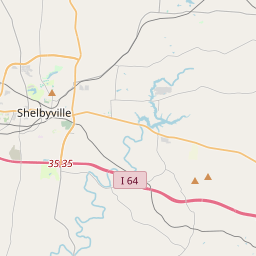Veterans of American Revolution Elected Governor of Kentucky
Historical marker location:






Isaac Shelby, 1792-96, 1812-16; Col., Va. Militia
James Garrard, 1796-1800, 1800-4; Col., Va. Militia
Christopher Greenup, 1804-8; Col., Va. Militia
Charles Scott, 1808-12; Brevet Maj. Gen., Cont. Army
George Madison, 1816-died same year; Capt., Caroline Militia, Va.
John Adair, 1820-24; Brig. Gen., S.C. Line
Presented by Ky. Soc. Sons of the Revolution.
(Reverse) Veterans of American Revolution Elected U.S. Senator from Ky.
John Brown, 1792-1805; Private, Va. Militia
John Edwards, 1792-95; Drummer, Pa. Line
Humphrey Marshall, 1795-1804; Capt.,Va. Militia
John Breckinridge, 1801-5; Subaltern, Va. Militia
George Walker, 1814; Pvt., Morgan's Rifle Corps
John Adair, 1805-6; Brig. Gen., S.C. Line
Presented by Ky. Soc. Sons of the Revolution
1765: The Stamp Act is passed by the British Parliament, imposing a tax on American colonists for various printed materials. This sparks widespread protests and resistance among the colonists.
1770: The Boston Massacre occurs when British soldiers fire on a crowd of American colonists in Boston, resulting in the death of five colonists. The event further escalates tensions between the colonists and British authorities.
1773: The Boston Tea Party takes place as colonists, disguised as Native Americans, dump tea from British East India Company ships into Boston Harbor in protest against the Tea Act.
1774: The First Continental Congress convenes in Philadelphia. Delegates from twelve of the thirteen colonies gather to discuss grievances against British policies and plan a united response.
1775: The Battles of Lexington and Concord mark the beginning of armed conflict between British troops and American colonial militia. The "shot heard 'round the world" ignites the Revolutionary War.
1776: On July 4, the Second Continental Congress adopts the Declaration of Independence, drafted primarily by Thomas Jefferson. The document asserts the colonies' independence from Britain and outlines the principles of individual rights and self-government.
1777: The American victory at the Battle of Saratoga in New York proves to be a turning point in the war. It convinces the French to openly support the American cause and enter the war as allies.
1778: The Treaty of Alliance is signed between the United States and France, formalizing their military alliance. France provides crucial support to the American forces, including troops, naval assistance, and financial aid.
1781: The Siege of Yorktown takes place in Virginia, where combined American and French forces, led by General George Washington and French General Rochambeau, successfully trap British General Cornwallis and his troops. Cornwallis surrenders on October 19, effectively ending major hostilities in the Revolutionary War.
1783: The Treaty of Paris is signed, formally ending the American Revolutionary War. Great Britain recognizes the independence of the United States and establishes its boundaries. The treaty also grants fishing rights to American fishermen in the waters off Newfoundland and Nova Scotia.
1787: The Constitutional Convention convenes in Philadelphia to draft a new constitution to replace the Articles of Confederation, which proved ineffective in governing the newly independent nation.
1788: The United States Constitution is ratified by the required number of states and goes into effect. It establishes a strong federal government with separate branches and a system of checks and balances.
1789: George Washington is inaugurated as the first President of the United States, and the new federal government is established in New York City.
This timeline provides a general overview of the major events during the American Revolution, but it is important to note that there were numerous other battles, diplomatic negotiations, and developments that occurred during this period.
The first successful gold rush in the United States occurred in 1806 in Kentucky. The gold was found in the sand and gravel of the Ohio River and its tributaries.
In the early years of its history, Franklin County played a significant role in the development of Kentucky as a state. It served as the temporary capital of Kentucky from 1792 to 1794, before the capital was moved permanently to the current location of Frankfort. The county has always maintained a close relationship with Frankfort, with many government buildings and offices located in Franklin County.
The development of the bourbon industry in the 19th century also played a vital role in the history of Franklin County. The county was home to several distilleries, including the famous Buffalo Trace Distillery, which is one of the oldest operating distilleries in the United States. With its fertile soil and ideal climate, Franklin County became known as the "Bourbon County" of Kentucky, producing some of the finest bourbon in the nation.
In the late 19th and early 20th centuries, Franklin County experienced significant growth and development. The construction of railways and the expansion of industry brought economic prosperity to the area. The county became known for its manufacturing and processing industries, including tobacco, textiles, and automotive parts. Today, Franklin County continues to be an important center of commerce and industry in Kentucky, while also preserving its rich history and cultural heritage.
Franklin County Timeline
This timeline provides a concise overview of the key events in the history of Franklin County, Kentucky.
- 1785: Franklin County is officially established on December 14.
- 1792: Kentucky becomes the 15th state, with Franklin County as one of its original counties.
- 1794: The town of Frankfort is officially established as the county seat.
- 1810: The first state capitol building is completed in Frankfort.
- 1839: The Old State Capitol building, now a historic site, is completed.
- 1861: During the American Civil War, Frankfort serves as the temporary capital of the Confederate government of Kentucky.
- 1865: The Old Governor's Mansion, now a museum, is completed.
- 1909: The new Kentucky State Capitol building is completed.
- 1936: The Forks of Elkhorn Baptist Church, established in 1783, is added to the National Register of Historic Places.
- 1984: Buffalo Trace Distillery, one of the oldest continuously operating distilleries in the United States, is added to the National Register of Historic Places.